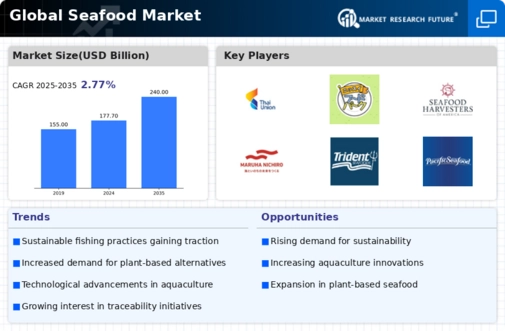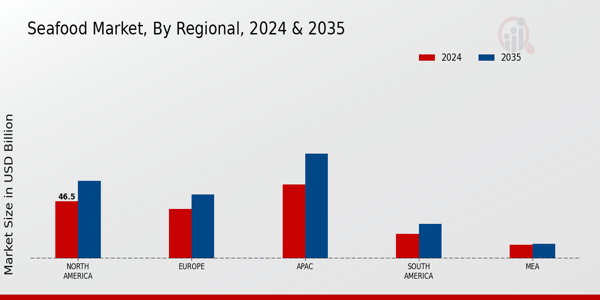The Global Seafood Market has experienced significant growth over recent years, driven by the rising demand for protein-rich diets and health-conscious consumer trends. Competitive dynamics in this market are shaped by factors such as sustainability practices, technological advancements in fishing and aquaculture, and evolving consumer preferences for diverse seafood products. Major players are constantly engaged in strategic initiatives that enhance their market positioning, such as mergers and acquisitions, product innovation, and expanding distribution networks. This industry is characterized by a mix of large multinational companies as well as small-scale fisheries and aquaculture operations, creating a complex competitive landscape.
Companies are challenged to adhere to stringent regulatory requirements while also responding to consumer demands for sustainability and ethical sourcing.Thai Union Group has solidified its presence as a dominant player in the Global Seafood Market through a strong focus on innovation, sustainability, and product diversification. The company has effectively leveraged its extensive supply chain capabilities, allowing it to deliver a wide range of seafood products that cater to various consumer preferences worldwide.
Their commitment to responsible fishing practices has earned Thai Union Group a competitive edge, making it easier for the company to form partnerships with retailers and food service operators. The brand is recognized globally for its high-quality products, including canned seafood and frozen fish, allowing it to excel in both retail and food service channels.
By emphasizing sustainability and employing advanced technologies in processing, Thai Union Group is well-positioned to adapt to the evolving marketplace and consumer demands.Nissui has established a significant foothold in the Global Seafood Market by focusing on high-quality products and a diverse portfolio that includes frozen seafood, processed fish products, and value-added ready-to-eat meals. The company has built a robust market presence through strategic acquisitions and partnerships that enhance its distribution capabilities internationally. Nissui’s strengths lie in its commitment to sustainability and innovation, ensuring its offerings are in line with consumer trends for healthy and sustainable food options.
The company emphasizes the importance of responsible sourcing and quality control throughout its supply chain, which enhances its reputation among global consumers and partners. With key products that cater to various markets, Nissui continues to strengthen its competitive stance while actively exploring opportunities for mergers and acquisitions to broaden its reach within the Global Seafood Market.



















Leave a Comment